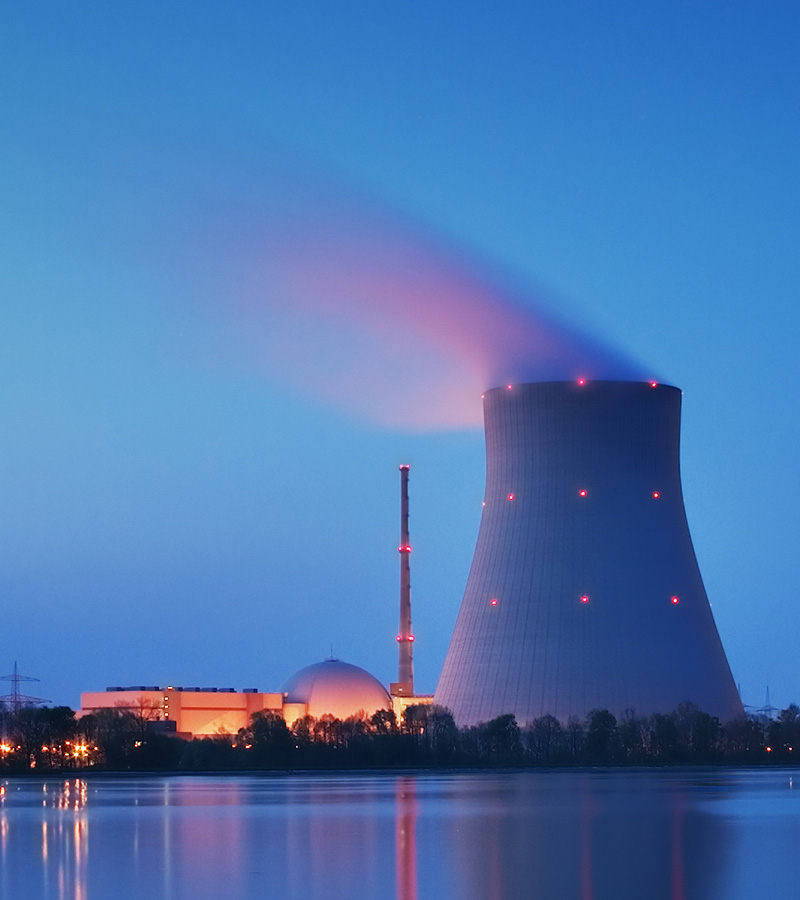
We need federal action, but not a blank check, to counter the premature retirement of nuclear plants
Nuclear energy, which the Intergovernmental Program on Climate Change (IPCC) includes in all of its potential pathways to keeping global warming below 1.5 C, provides more than half the clean electricity generated in the U.S. It also offers the 28 states that have at least one commercial nuclear reactor a base of clean energy to build upon to achieve future decarbonization goals. However, nine nuclear reactors, or more than 6 GW of firm clean energy capacity, have prematurely retired since 2012 due to economic factors associated with electricity market conditions and the low price of natural gas and renewables. While nationwide expansion of renewable generation has been welcome and substantial, the loss of these nuclear energy assets has resulted in increased regional emissions, economic strife for communities, and a step backward from national, regional, and local decarbonization goals. State legislatures have recognized the value of the existing nuclear energy providers and passed laws to ensure continued operation. Now, as the closure dates of many plants approaches and still more closures are being announced, the federal government must intervene.
At least five U.S. states have passed some form of support for preserving the operating nuclear power plants within their borders. Additionally, the U.S. Nuclear Regulatory Commission has approved the continued operation of some nuclear reactors to 80 years and is considering requirements and processes to approve continued operation beyond 80 years. Numerous studies, including one Clean Air Task Force recently completed with the Environmental Defense Fund, Stanford University, and others, have highlighted the need for clean firm power sources for a fully decarbonized grid. Additionally, CATF has documented air pollution impacts in power markets where the premature closure of nuclear units is likely to be replaced to a significant extent by fossil generation. The combination of these factors, along with the recognized need at the state level, longevity of the assets, and growing grid challenges, have created the impetus for a larger federal discussion on preserving existing nuclear energy generation.
Fortunately, numerous federal options are now being considered to support existing nuclear energy capacity. In June, Congressman Bill. Pascrell (D-IL) and Senator Ben Cardin (D-MD) led a group of bicameral, bipartisan co-sponsors in introducing the Zero-Emission Nuclear Power Production Credit Act of 2021 that would institute a production tax credit for existing nuclear generation. These bills would provide a 1.5 cent/kilowatt hour support for existing nuclear plants. This legislation has been offered as complementary, including in a recent Senate Finance Committee mark-up, to the broad sweeping clean energy tax legislation led by Senator Ron Wyden (D-OR), the Clean Energy for America Act
Last Congress, our Executive Director, Armond Cohen, testified before the U.S. Senate on a potential pathway for creating a federal, zero-emission credit system to support the existing nuclear fleet. The American Nuclear Infrastructure Act (ANIA) was reported out of the Environment and Public Works committee, but did not become law. In addition to providing carbon credits needed by financially struggling nuclear power plants, the legislation contained important associated oversight to ensure support was needed and appropriately scaled – an approach CATF championed. We supported a two-part process: (1) a financial stress test that determines the qualification for owners of nuclear units to participate in and (2) a reverse auction for a finite amount of credits. ANIA was recently reintroduced by a bipartisan group of Senators and again includes carbon credits with this two-part process.
Each of these proposed federal pieces of legislation could help reach our climate goals by avoiding retirement of the existing nuclear fleet. But guardrails must be put in place. We should ensure that:
- Any nuclear units receiving federal support must be truly at-risk of premature retirement.
- Any support provided should be sufficient, but limited, to allowing the nuclear unit to continue operating.
- That support should be spread among as many nuclear plants as need it.
In the President’s Budget, the White House proposed a production tax credit (PTC) for existing nuclear assets that adopted this general approach. In addition, Sen. Manchin’s Energy Infrastructure Act of 2021 that was marked up last week adopted the two-part, financial stress test and reverse auction approach for an existing nuclear credit program at the Department of Energy.
CATF looks forward to working with Congress to ensure that an effective program for at-risk nuclear units is included in clean energy tax legislation or an infrastructure package. In fact, these two approaches can be complementary to one another, and to our goals to set a federal clean energy standard or expand available tax credits for clean electricity generation and investment.



